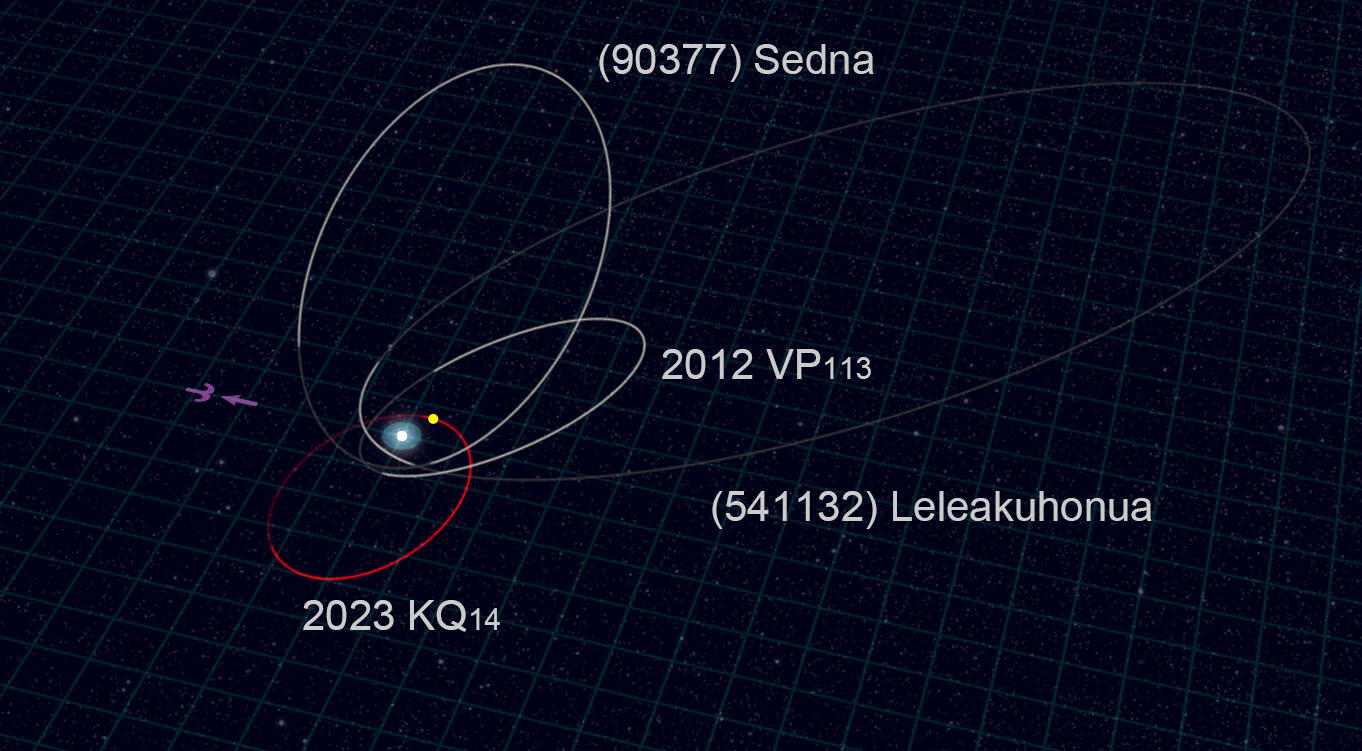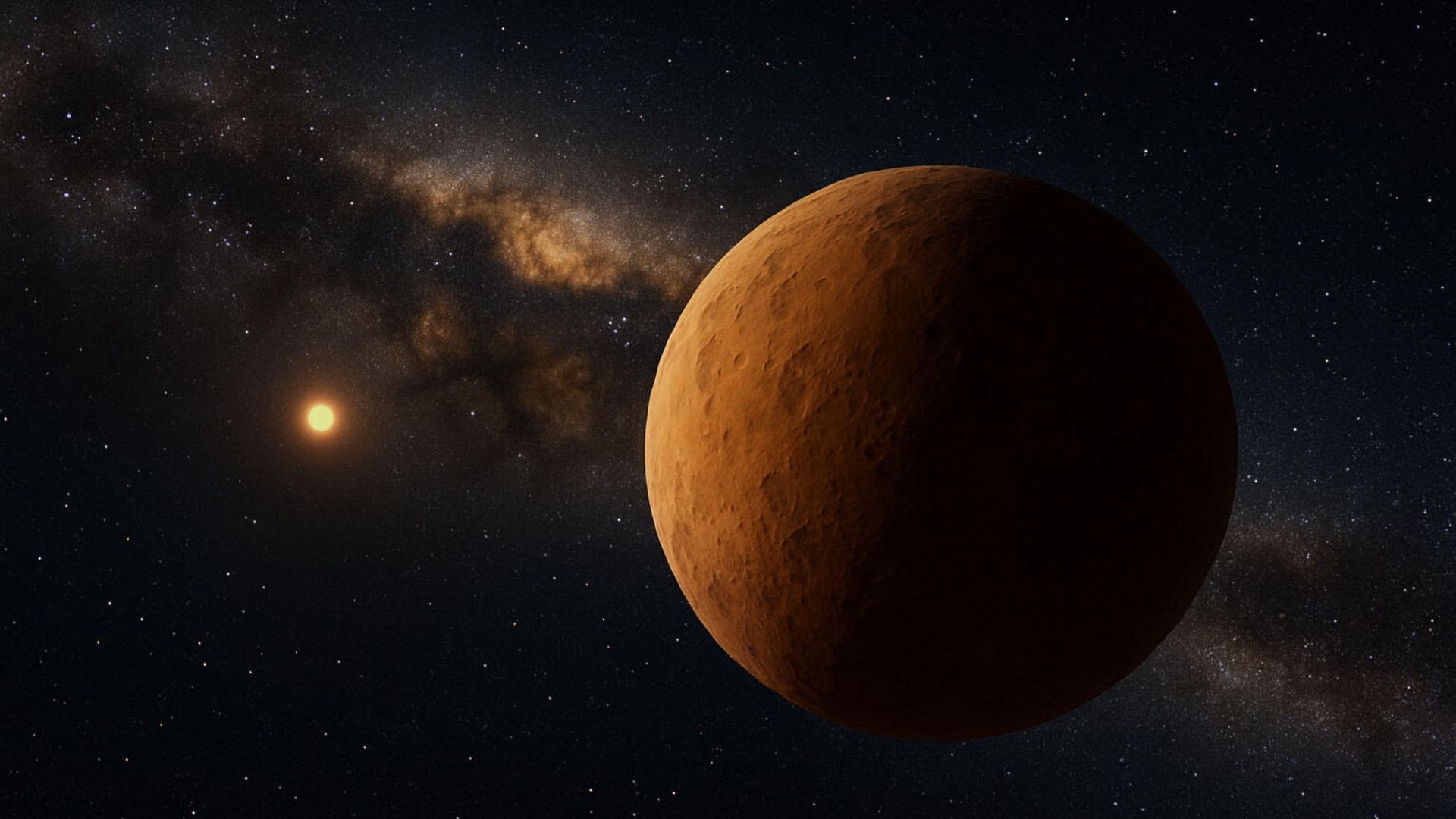New Delhi: The Subaru Telescope located at Mount Maunakea in Hawai’i and operated by the National Astronomical Observatory of Japan (NAOJ) has spotted a distant fossil world beyond the orbit of Neptune. The newly discovered object bears the designation of 2023KQ14 and is the fourth Sednoid discovered, a group of small, icy bodies in the distant reaches of the Solar System with peculiar orbits named after Sedna, the first in the group to be discovered in 2003. Simulations indicate that 2023 KQ14 has maintained a stable orbit since the early stages of the formation of the Solar System, and as such is a fossil.

The orbits of the Sednoids. (Image Credit: NAOJ).
Astronomers have nicknamed 2023 KQ14 ‘Ammonite’, after the extinct coil-shelled cephalopods that are among the most common fossils, colloquially known as Shaligram Shila. Ammonite preserves memories of the infancy of the Solar System, and may provide clues on the hypothetical Planet Nine (the discovery decreases the likelihood of the hypothesis), as well as the formation and evolution of the Solar System. Ammonite was discovered by the Formation of the Outer Solar System: An Icy Legacy (FOSSIL) survey, designed to explore the icy worlds occupying the fringes of the Solar System. Ammonite was discovered in observations conducted between march and August 2023 by the Subaru Telescope, and subsequently confirmed by other observatories.
Runaway Planet Nine
A paper describing the findings has been published in Nature Astronomy. One of the study authors Fumi Yoshida says, “Ammonite was found in a region far away where Neptune’s gravity has little influence. The presence of objects with elongated orbits and large perihelion distances in this area implies that something extraordinary occurred during the ancient era when Ammonite formed. Understanding the orbital evolution and physical properties of these unique, distant objects is crucial for comprehending the full history of the Solar System. At present, the Subaru Telescope is among the few telescopes on Earth capable of making such discoveries. I would be happy if the FOSSIL team could make many more discoveries like this one and help draw a complete picture of the history of the Solar System.” It is possible that the ejection of Planet Nine from the Solar System resulted in the unusual orbits of the Sednoids.
